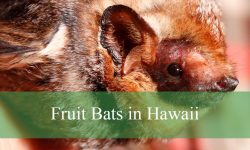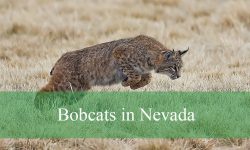The deserts and forests of New Mexico are inhabited by diverse arthropods capable of causing pain or irritation through stings and bites. From scorpions to spiders and venomous caterpillars, understanding these creatures is essential for outdoor safety.
This guide covers 24 dangerous bugs in New Mexico, highlighting their appearance, behavior, habitats, and the risks they pose to humans. Each entry includes helpful identification tips and safety advice.
Whether you’re hiking in the desert, gardening, or exploring suburban areas, knowing which bugs to watch out for can help prevent painful encounters and ensure a safer experience outdoors.
Types of Dangerous Bugs Found in New Mexico
New Mexico Bark Scorpion
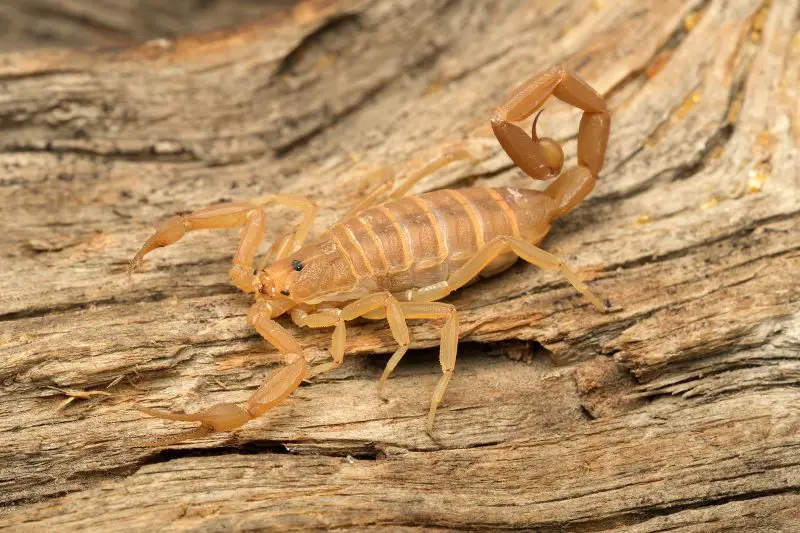
The New Mexico Bark Scorpion (Centruroides sculpturatus) is one of the most notorious scorpions in New Mexico and the most venomous in North America. Adults are typically light brown to yellowish, with a segmented tail that curves over their back ending in a sharp stinger. They grow to about 2.5–3.5 inches (6–9 cm) long, with slender pincers and an elongated body, making them quick and agile hunters.
These scorpions are primarily nocturnal, feeding on insects, spiders, and small arthropods at night. During the day, they hide under rocks, tree bark, logs, or in human dwellings near cool, damp areas. They are excellent climbers and often enter homes seeking moisture and shelter.
The venom contains potent neurotoxins, causing intense pain, numbness, tingling, and in severe cases, muscle spasms, drooling, and breathing difficulties—especially in children, the elderly, or those with compromised immune systems. While fatalities are rare, medical attention is strongly recommended after a sting.
Human encounters often occur indoors, particularly in desert communities during hot months. Stings are usually accidental, caused by stepping on or handling the scorpion. Prompt antivenom treatment and supportive care are effective in preventing serious complications.
Giant Desert Centipede
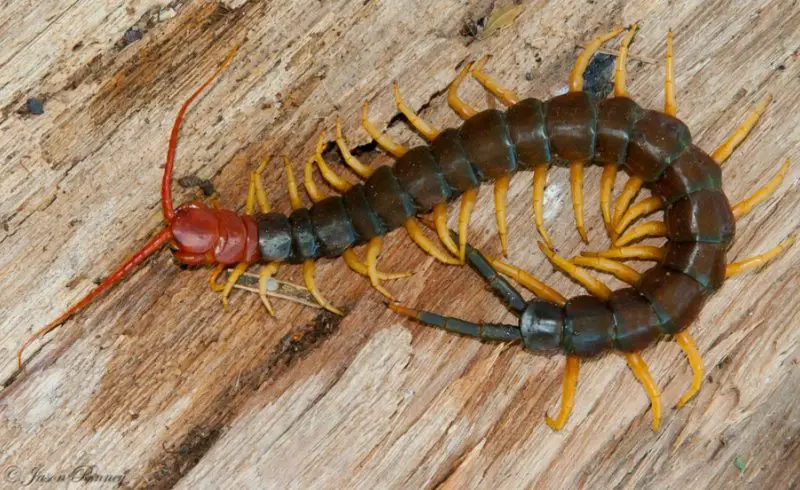
The Giant Desert Centipede (Scolopendra heros), also known as the giant redheaded centipede, is a large arthropod found in New Mexico’s desert regions. Adults can reach 8–12 inches (20–30 cm) in length with a reddish-brown segmented body. Each segment has a pair of legs, with the first pair modified into venomous forcipules for capturing prey.
This centipede is nocturnal, hunting insects, spiders, and occasionally small vertebrates. Highly agile, it can climb rocks and burrow under debris. During the day, it hides under rocks, logs, or in crevices to escape the intense desert heat.
Its venom causes intense localized pain, swelling, redness, and sometimes nausea or headache. Bites are rarely life-threatening but can trigger allergic reactions in sensitive individuals. Human bites typically occur when handling the centipede or accidentally disturbing its hiding spots.
Black Widow Spider
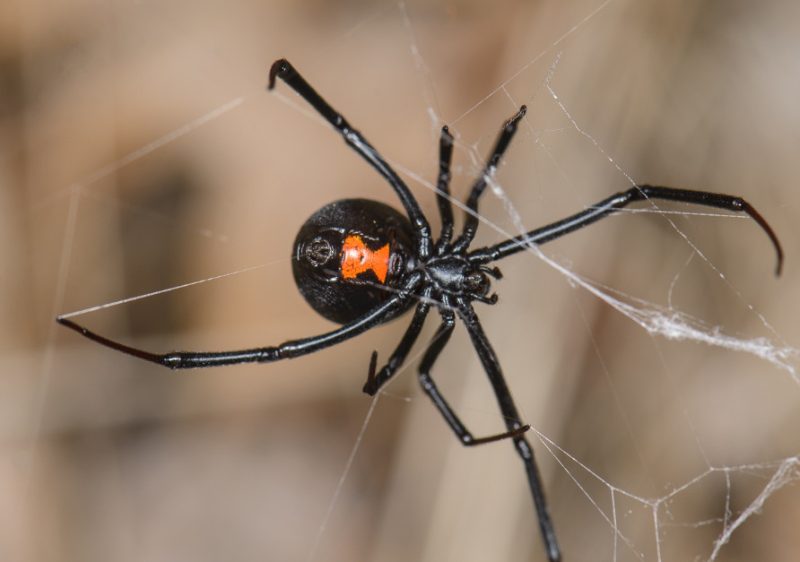
The Black Widow Spider (Latrodectus hesperus) is recognized by its glossy black body and the red hourglass marking on the underside of its round abdomen. Female black widows grow to about 1.5 inches (3.8 cm) including leg span, while males are smaller and less venomous. Their smooth, shiny exoskeleton and long legs aid in stealthy hunting.
These spiders build irregular webs in dark, undisturbed areas such as woodpiles, sheds, garages, and under rocks. They are primarily nocturnal hunters, waiting for insects to become ensnared in their silk. Black widows rarely leave their webs unless provoked.
Their venom contains neurotoxins that can cause severe muscle pain, abdominal cramping, sweating, and sometimes difficulty breathing. While rarely fatal, bites can require medical attention. Children, elderly individuals, and those with compromised health are most at risk.
Brown Recluse Spider
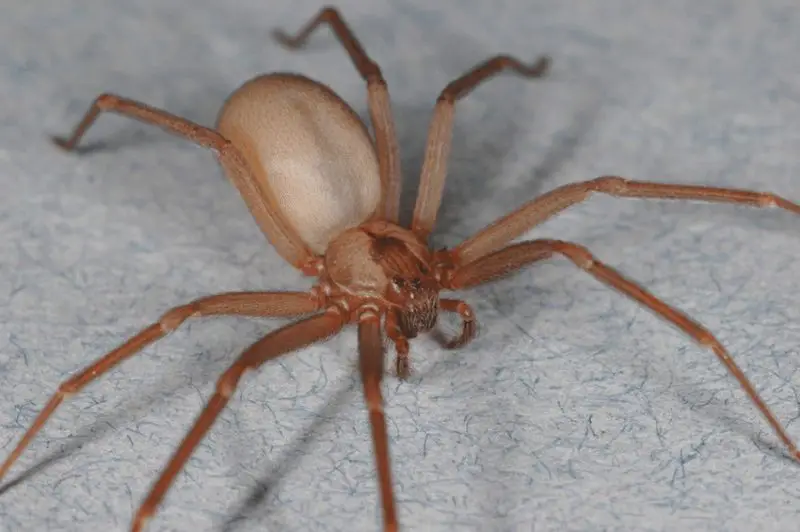
The Brown Recluse Spider (Loxosceles reclusa) is small, brown, and ranges from 0.25–0.75 inches (6–20 mm) in body length, with long thin legs. It is best recognized by the dark violin-shaped marking on its cephalothorax, with the neck pointing toward the abdomen. These spiders are stealthy and often unnoticed indoors.
They are nocturnal hunters feeding on small insects and prefer secluded, dry environments such as closets, attics, storage boxes, and under furniture. During the day, they hide in dark corners or crevices, making human encounters mostly accidental.
Their venom contains necrotic toxins that can cause tissue damage, producing ulcer-like wounds that may take weeks to heal. Symptoms include redness, swelling, pain, and rarely systemic effects like fever or nausea. Fatalities are extremely rare but require immediate attention if systemic reactions occur.
Kissing Bugs (Triatomine bugs)
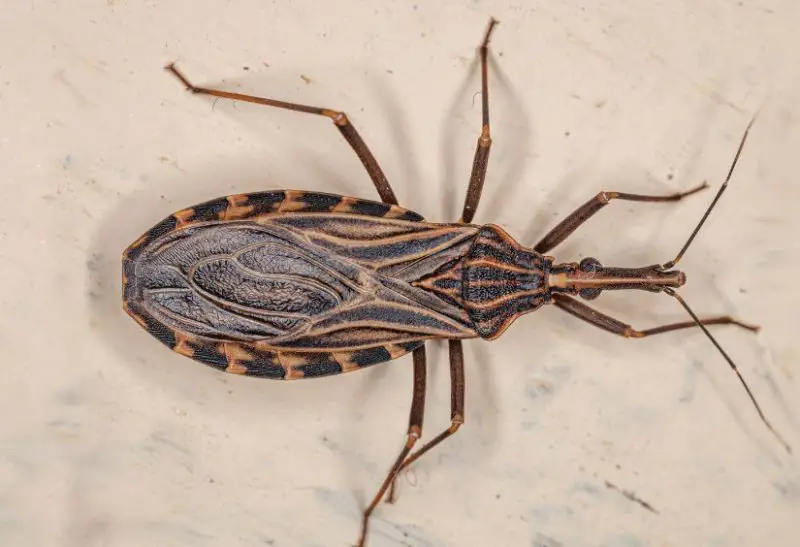
Kissing bugs (Triatomine bugs, Triatoma spp.) are blood-feeding insects found in New Mexico. Adults measure roughly 0.75–1.25 inches (2–3 cm), with flat, elongated bodies colored dark brown to black, often with orange or red markings along the edges. They are named “kissing bugs” because they tend to bite humans around the mouth or eyes during sleep.
These nocturnal insects are attracted to light and carbon dioxide. They hide in cracks, crevices, or under rocks during the day, emerging at night to feed on mammals, including humans. Their bites are stealthy and usually painless, making detection difficult until symptoms appear.
The primary danger is their potential to transmit Trypanosoma cruzi, the parasite causing Chagas disease. While bites themselves are not highly venomous, they can cause itching, swelling, and irritation. Human encounters often occur in rural or suburban areas where they nest in animal burrows, woodpiles, or poorly sealed homes. Preventive measures include sealing cracks, using screens, and monitoring for activity. Cleaning bites and medical evaluation are advised if symptoms develop.
Saddleback Caterpillar (Acharia stimulea)
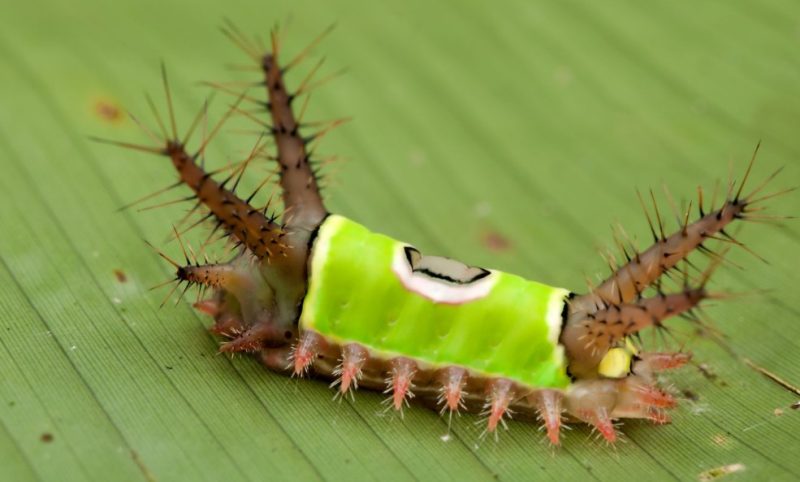
The Saddleback Caterpillar (Acharia stimulea) is a small, vibrant caterpillar easily recognized by its bright green body with a distinctive brown “saddle” marking in the middle of its back. It has spiny projections along its body tipped with venomous glands. Adults grow to about 1 inch (2.5 cm) in length, but the stinging spines make even a small caterpillar dangerous to humans.
In New Mexico, this species is primarily found on deciduous trees, shrubs, and garden plants. They feed during the day on foliage, often blending in due to their green coloration. Despite slow movements, they are highly effective herbivores in localized areas.
The spines contain toxins that inject venom when touched, causing immediate pain, burning, swelling, nausea, and sometimes rashes or blisters. In sensitive individuals, reactions may include headaches or fever. Human encounters usually occur accidentally while gardening or handling plants. Care should be taken to avoid direct contact, and removal with tools rather than hands is recommended. Washing the area with soap and cold water helps reduce irritation after contact.
Puss Caterpillar / Flannel Moth Caterpillar (Megalopyge opercularis / M. crispata)
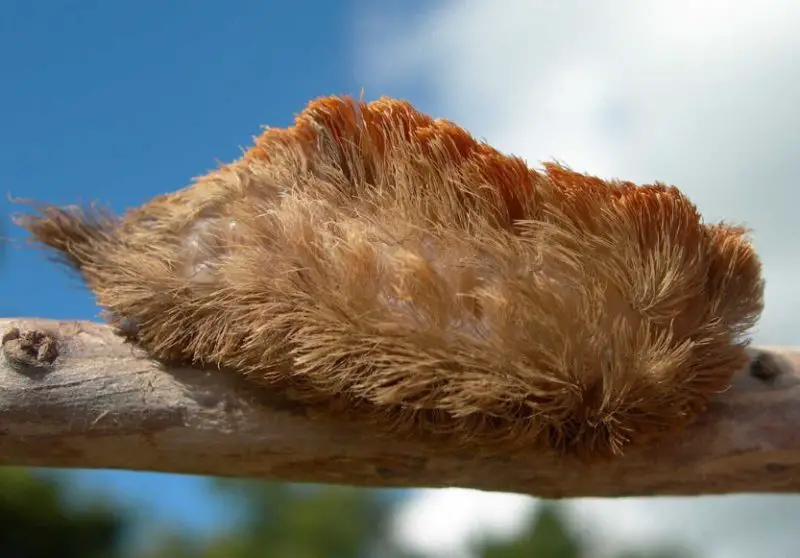
The Puss Caterpillar or Flannel Moth Caterpillar (Megalopyge opercularis / M. crispata) is among the most venomous caterpillars in North America. Covered in soft, long hairs resembling tufts of fur or cotton, they often appear gray, brown, or cream. Adults reach about 1 inch (2.5 cm) long, with dense hair concealing venomous spines underneath.
In New Mexico, they inhabit trees and shrubs, particularly oaks, elms, and ornamental plants. These slow-moving caterpillars blend seamlessly into leaf litter or branches, making them nearly invisible until touched. They feed on foliage, leaving irregular holes in leaves.
Venomous spines beneath the hairs can inject toxins, causing intense pain, burning, swelling, nausea, headaches, and sometimes systemic reactions such as muscle cramps or difficulty breathing. Human encounters are typically accidental during gardening, hiking, or handling branches. Immediate treatment includes removing spines with adhesive tape, washing the affected area, and applying cold packs or pain relief. Severe reactions require medical attention.
Honey Bees
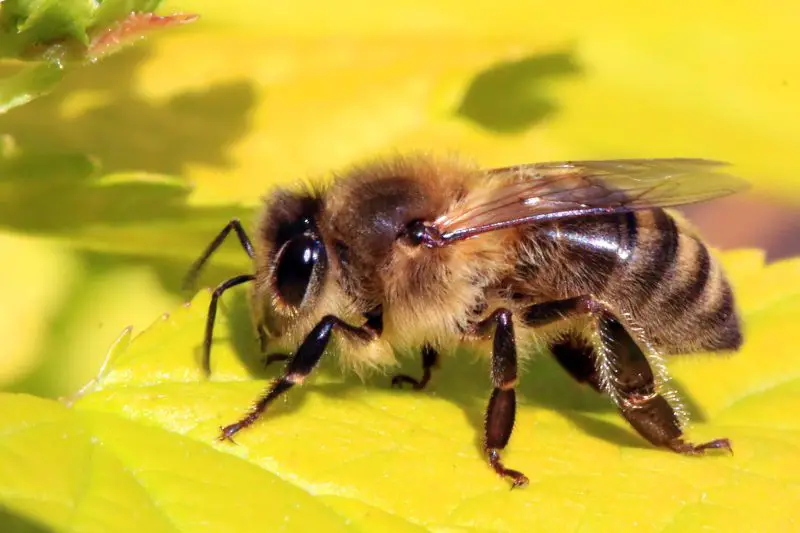
Honey Bees (Apis mellifera) are social insects with fuzzy, golden-brown bodies, typically 0.5–0.6 inches (1.3–1.5 cm) in length. Worker bees possess stingers connected to venom sacs, which they use to defend the hive. Honey bees are essential pollinators, living in organized colonies with a queen, drones, and workers.
In New Mexico, honey bees build hives in hollow trees, attics, or man-made structures. They forage during daylight hours for nectar and pollen, using their waggle dance to communicate resource locations. Colonies are active year-round, with peak activity in spring and summer.
Venom contains proteins that cause pain, swelling, redness, and itching. Honey bees die after stinging because the barbed stinger lodges in the skin. Allergic individuals may experience severe anaphylaxis. Human encounters usually occur near flowering plants or hives. Stings are defensive and can be avoided by remaining calm, not disturbing hives, and wearing protective clothing during beekeeping.
Africanized Honey Bees
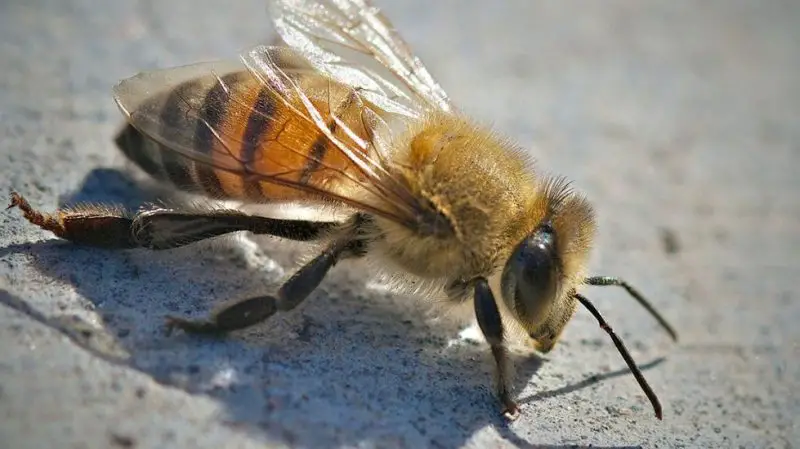
Africanized Honey Bees (Apis mellifera scutellata hybrid) are a hybrid of African and European honey bees, more aggressive than European honey bees. They are similar in size and appearance to regular honey bees but respond more rapidly to perceived threats and may pursue intruders over long distances.
In New Mexico, these bees form hives in natural cavities, tree hollows, and man-made structures. Colonies are highly populous and respond collectively to threats with coordinated stinging attacks. They forage widely and can swarm quickly, making them unpredictable.
Their venom is chemically similar to European honey bees but delivered in larger numbers due to mass attacks. Stings cause intense pain, swelling, and, in multiple numbers, nausea, dizziness, or severe allergic reactions. Human encounters are especially dangerous near hives or agricultural areas. Protective clothing, caution, and hive awareness are essential, as Africanized bees may attack without clear provocation.
Yellowjackets
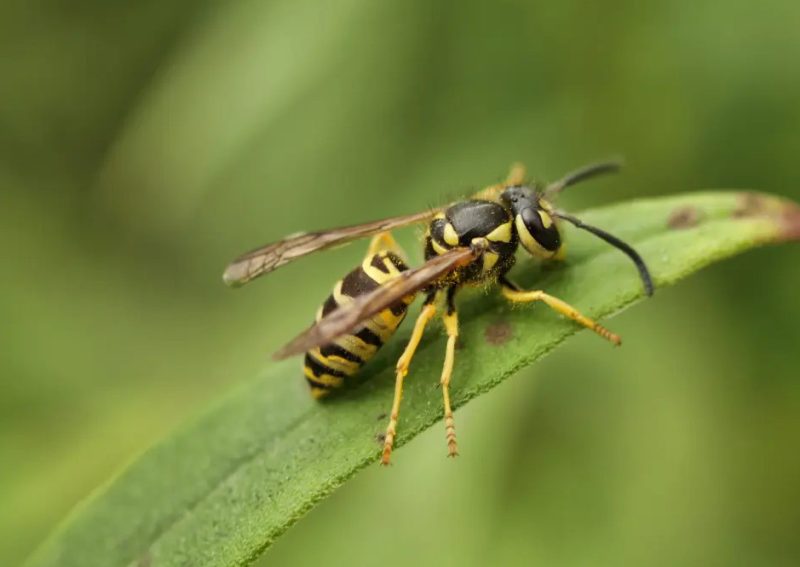
Yellowjackets (Vespula spp. / Dolichovespula spp.) are aggressive wasps with black-and-yellow striped bodies, about 0.5 inches (1.2–1.5 cm) long. Unlike bees, they can sting multiple times without dying and have strong jaws for capturing insects and chewing plant material for nests.
In New Mexico, yellowjackets build paper-like nests underground, in wall cavities, or in shrubs. Colonies are active during warm months, foraging for sugary foods, meats, and insects. Nests can contain hundreds of individuals, making encounters potentially hazardous.
Their venom causes sharp, burning pain, redness, swelling, and itching. Multiple stings may lead to nausea, dizziness, or anaphylaxis in allergic individuals. Human encounters usually occur when nests are disturbed or when yellowjackets are attracted to outdoor food, drinks, or garbage. Rapid movement, avoidance of swatting, and professional nest removal are critical for safety.
Paper Wasps
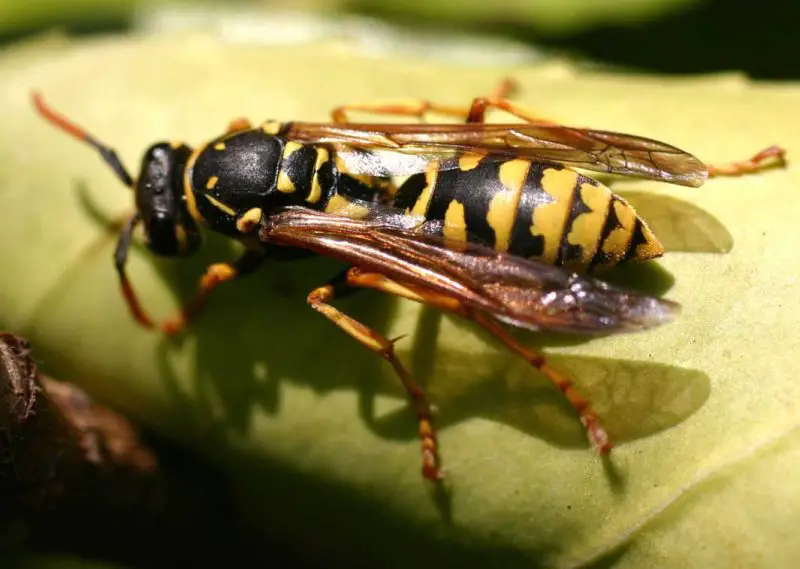
Paper Wasps (Polistes spp.) are slender, brownish-yellow wasps with long legs that dangle during flight. Adults measure about 0.7–1 inch (18–25 mm) long. Their narrow waist and elongated bodies differentiate them from other wasps, and they exhibit graceful, slow flight patterns when patrolling their nests.
In New Mexico, these social wasps build open, umbrella-shaped nests made of paper-like material, often attached to eaves, tree branches, or shrubs. Colonies are active during warm months, with workers foraging for nectar, pollen, and insects to feed larvae. Paper wasps are relatively docile if unprovoked.
Their sting contains venom that causes sharp pain, redness, swelling, and itching. While generally not dangerous to most adults, stings can be severe in allergic individuals and occasionally cause systemic reactions. Paper wasps can sting multiple times to defend their nest.
Human encounters occur near homes, gardens, or picnic areas where nests are present. Avoiding nest disturbance, wearing protective clothing when gardening, and observing from a safe distance are recommended. Prompt treatment includes cleaning the area and applying cold packs or topical pain relief.
Bald-faced Hornets
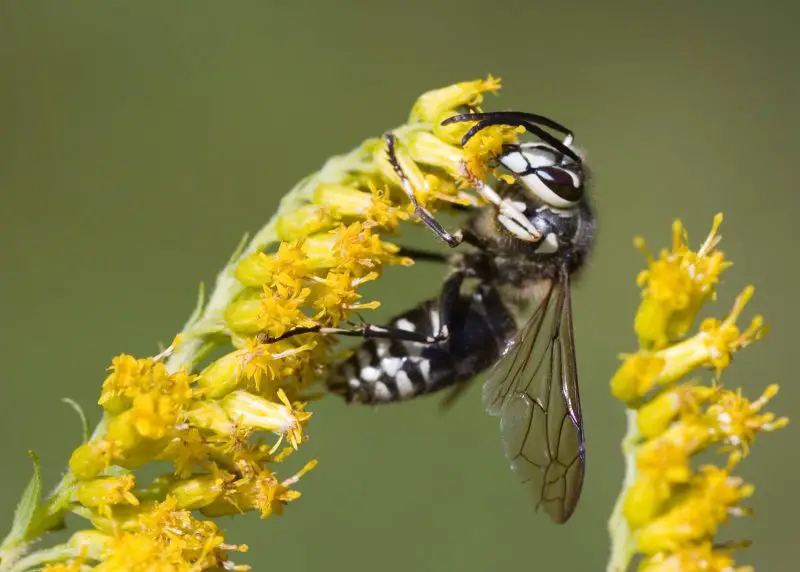
Bald-faced Hornets (Dolichovespula maculata) are large black-and-white wasps, measuring approximately 0.6–1 inch (15–25 mm) in length. They are easily recognized by their white facial markings and robust, shiny bodies. Strong wings allow agile flight, and they are highly territorial around nests.
In New Mexico, they construct large, enclosed paper nests hanging from trees or shrubs, often in secluded areas. Colonies house hundreds of individuals, with workers foraging for nectar, fruit, and insects to feed larvae. Bald-faced hornets are most aggressive during late summer when colony size peaks.
Their venom is potent, causing immediate pain, swelling, redness, and sometimes nausea or dizziness. Multiple stings can be dangerous, especially to allergic individuals, though fatalities are rare. They vigorously defend nests and may chase perceived threats over long distances.
Human encounters usually occur near hanging nests or during outdoor activities in wooded areas. Avoiding nests and maintaining a safe distance is essential. Protective clothing and professional nest removal are recommended if nests are near homes.
Fire Ants
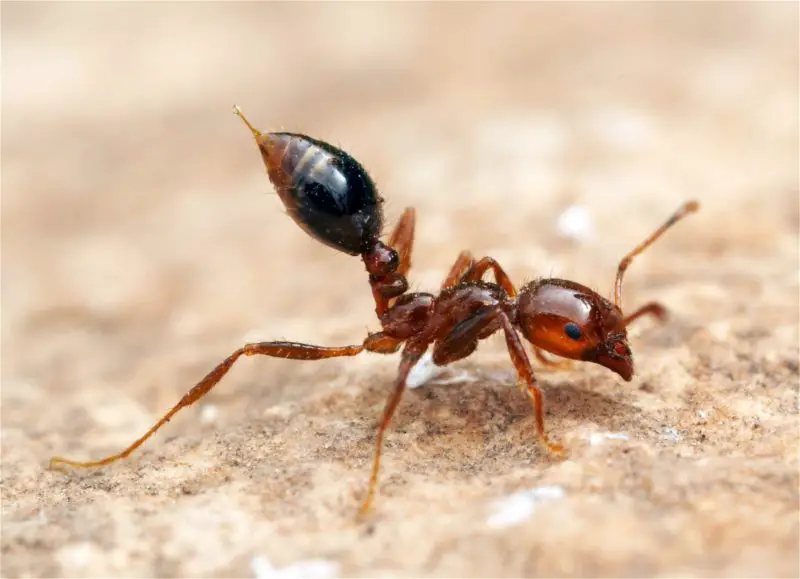
Fire Ants (Solenopsis spp.) are small, reddish-brown ants, approximately 0.1–0.25 inches (3–6 mm) long. Their aggressive nature and venomous sting make them particularly notorious. Colonies have complex mound structures, commonly found in sunny areas, lawns, and gardens.
They are omnivorous, foraging for seeds, insects, and sugary substances. Highly territorial, they attack intruders in coordinated swarms. Their rapid mobilization makes them one of New Mexico’s more aggressive ant species.
Venom contains alkaloids that cause burning pain, redness, swelling, and pustule formation. Multiple stings can produce systemic reactions including fever, dizziness, and, in severe cases, anaphylaxis. Children and allergic individuals are at greater risk.
Human encounters typically occur when stepping on mounds or disturbing foraging ants. Preventing stings involves avoiding mounds, wearing boots and protective clothing, and using professional pest control in heavily infested areas. Immediate treatment includes washing stings, applying ice, and monitoring for allergic reactions.
Harvester Ants
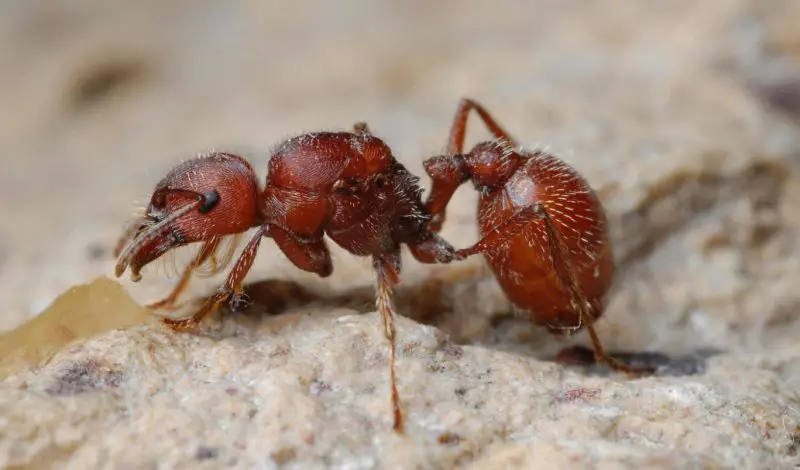
Harvester Ants (Pogonomyrmex spp.) are medium-sized, 0.25–0.5 inches (6–13 mm) long, usually reddish or dark brown. Recognized by large, spiny heads and strong mandibles, they are active during the day in warm desert environments and skillful foragers of seeds and plant material.
In New Mexico, they construct large, conspicuous mounds in sunny areas with clear soil. Colonies are highly organized, and workers aggressively defend their nests against intruders. They are common in desert and semi-desert regions.
Their sting injects venom causing sharp, burning pain, swelling, and redness. While chemically similar to fire ants, stings are usually isolated unless multiple ants are provoked. Allergic reactions are possible but less common.
Human encounters usually happen when walking barefoot or disturbing nest mounds. Protective footwear and vigilance around known mounds are effective preventive measures. Stings should be cleaned, iced, and monitored for adverse reactions.
Velvet Ants (Cow Killers)
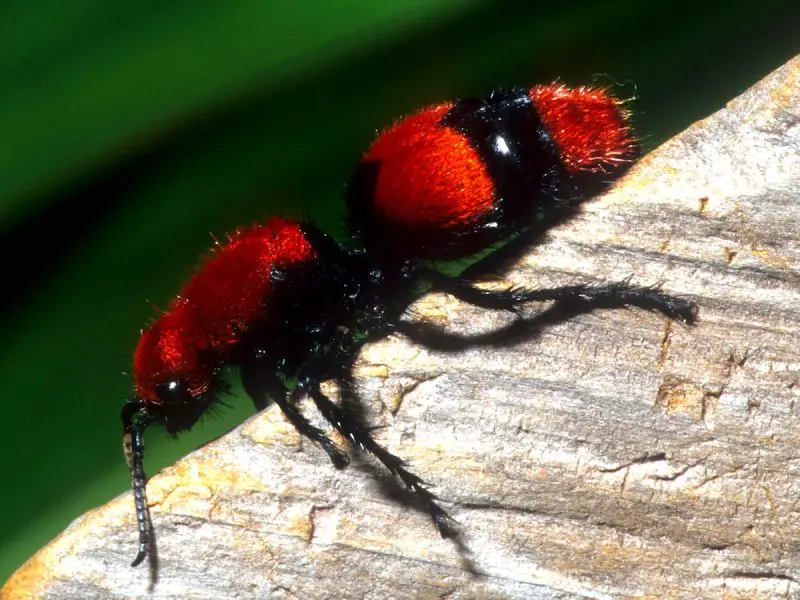
Velvet Ants (Dasymutilla spp.), often called “cow killers,” are actually solitary wasps, not true ants. Females are wingless, with bright red or orange hairy bodies, about 0.5–1 inch (12–25 mm) long. Males have wings and are less commonly seen. Their vivid coloration warns of a very painful sting.
In New Mexico, they inhabit arid, sandy environments, hiding in soil, under rocks, or within desert vegetation. Females seek underground nests of other insects to lay eggs. Their coloration and nocturnal habits help avoid predators.
The sting is extremely painful, causing intense burning, swelling, and sometimes localized numbness, though not lethal to humans. Pain usually subsides within a few hours, but caution is necessary due to severity. Human encounters occur when stepping on or handling them; observing from a distance is safest.
Assassin Bugs (Other than Kissing Bugs)
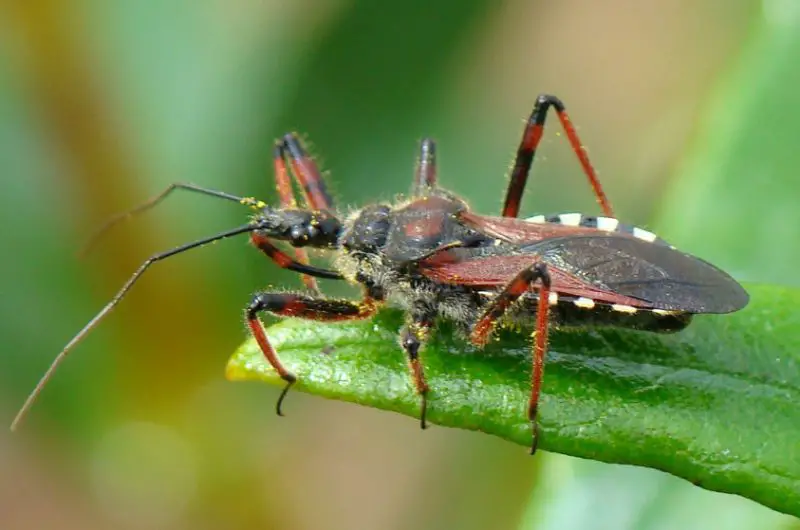
Assassin Bugs (Reduviidae family, non-Triatomine species) are predatory insects with elongated bodies, typically 0.5–1.25 inches (12–32 mm) long. They are usually brown or black and have a curved proboscis used to pierce prey. Their raptorial forelegs and strong mandibles make them effective hunters of other insects.
In New Mexico, these bugs are found in vegetation, leaf litter, and under rocks in desert and semi-arid areas. They actively hunt at night, using their proboscis to inject digestive enzymes that liquefy prey tissues for consumption.
Some species can deliver a painful defensive bite. The bite injects enzymes causing sharp pain, swelling, redness, and localized irritation. It is rarely life-threatening but can be uncomfortable, especially for sensitive individuals.
Human encounters usually occur when reaching into vegetation, moving rocks, or handling debris where the bugs hide. Wearing gloves and exercising caution in natural areas reduces the risk of bites. First aid includes washing the area and applying cold packs or topical pain relief.
Tarantula Hawks (Wasps)
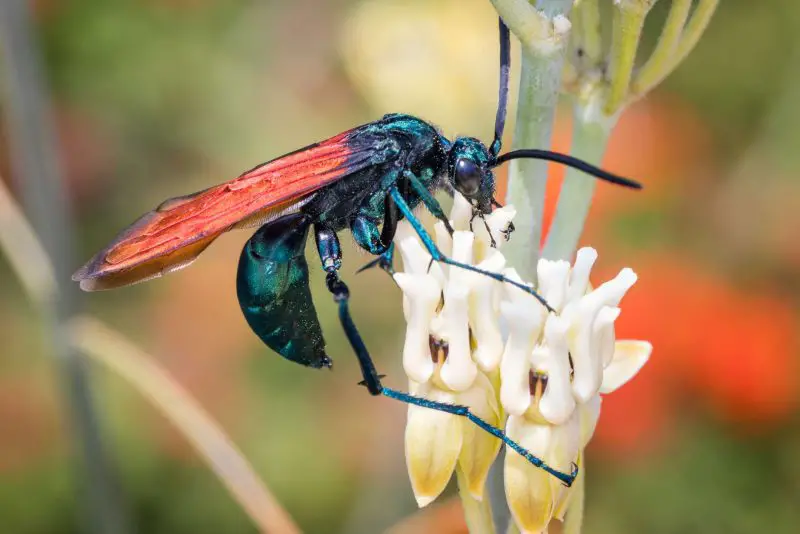
Tarantula Hawks (Pepsis grossa and related species) are large, striking wasps with metallic blue-black bodies and bright orange wings, measuring 1.5–2 inches (38–50 mm) long. They have long legs and a robust stinger, considered one of the most painful stings among insects. Despite their size, they are generally non-aggressive toward humans.
In New Mexico, these solitary wasps inhabit desert and scrub areas. They hunt tarantulas by paralyzing them and dragging them to underground burrows to serve as food for their larvae. Adults feed on nectar and are often seen hovering around desert blooms.
The sting produces intense, immediate pain, burning, throbbing, and sometimes temporary muscle weakness. Pain can last 5–30 minutes but is rarely medically dangerous. The sting is primarily defensive rather than predatory.
Human encounters are uncommon but can occur when accidentally disturbing them during hiking or gardening. Avoiding close contact and giving them space is the safest approach. Despite the sting’s intensity, fatalities are virtually unheard of.
Red Imported Fire Ants (In Some Areas)
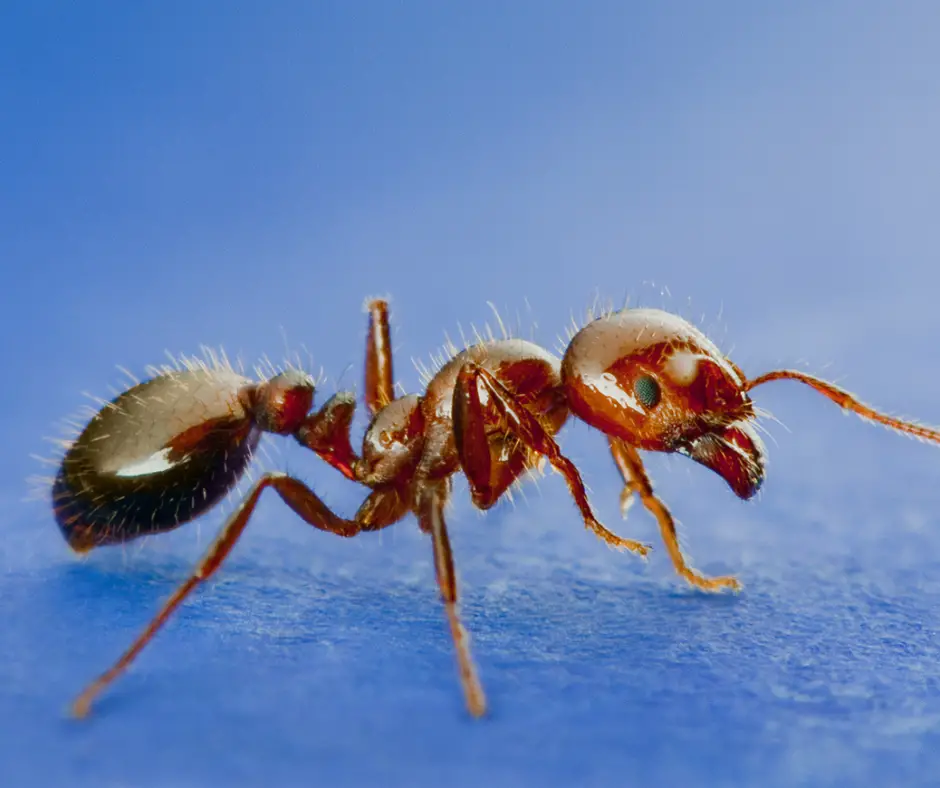
Red Imported Fire Ants (Solenopsis invicta) are reddish-brown ants about 0.1–0.25 inches (3–6 mm) long, known for aggressive swarming. Originally from South America, they have established colonies in parts of New Mexico, especially in disturbed soils and urban areas.
They build large dome-shaped mounds and forage actively during the day. Fire ants are omnivorous, feeding on insects, seeds, and sugary substances, and they defend their nests in coordinated swarms.
Venom contains alkaloids causing sharp, burning pain, swelling, redness, and pustules. Multiple stings may trigger systemic symptoms such as nausea, dizziness, and, in allergic individuals, potentially life-threatening reactions. Children and pets are especially vulnerable.
Human encounters typically occur when stepping on mounds or disturbing foraging ants. Protective footwear, caution around mounds, and professional pest control in infested areas are recommended. Prompt treatment involves washing, icing, and monitoring for allergic reactions.
Vinegaroons (Whip Scorpions, Not Deadly but Painful)
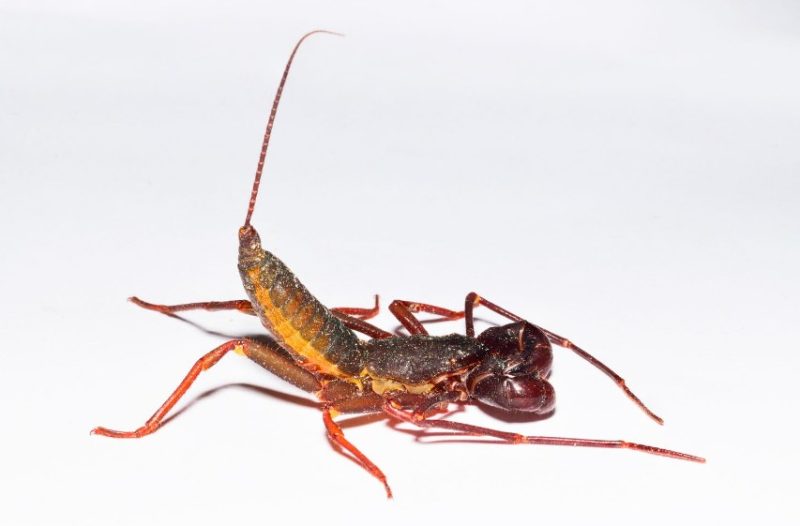
Vinegaroons (Mastigoproctus giganteus), or whip scorpions, are large arachnids with dark, flattened bodies up to 3 inches (7–8 cm) long and whip-like tails. They resemble scorpions but lack venom. Instead, they spray a vinegar-like substance (acetic acid) as a defense.
In New Mexico, they inhabit arid and semi-arid regions, hiding under rocks, logs, and leaf litter. Vinegaroons are nocturnal predators, feeding on insects and small arthropods, and rely on their defensive spray to deter predators.
Although non-venomous, their strong pincers can deliver a painful pinch. The acetic acid spray causes skin irritation and a burning sensation, which is temporary but uncomfortable.
Human encounters are usually accidental, such as when turning over rocks or debris. Avoiding handling and giving them space prevents injury. Protective gloves and careful observation are sufficient for safe coexistence.
Centipedes of the Genus Scolopendra
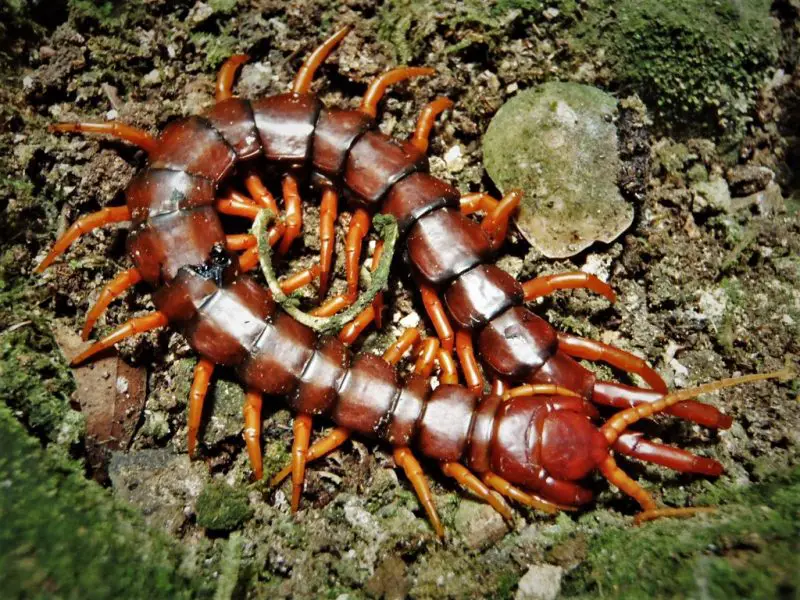
Centipedes of the genus Scolopendra are large, fast-moving arthropods, ranging 6–12 inches (15–30 cm) long, with flattened, segmented bodies and numerous legs. Powerful forcipules near the head inject venom into prey. Coloration varies from reddish-brown to dark brown with banded patterns.
In New Mexico, these centipedes are nocturnal hunters, preying on insects, spiders, and occasionally small vertebrates. They hide under rocks, logs, and in crevices during the day to avoid desert heat.
The venom causes intense pain, redness, swelling, and localized tissue irritation. Bites are extremely painful but rarely fatal. Allergic reactions can occur and require medical attention. Fast movements and strong jaws make accidental encounters especially painful.
Human encounters often happen when handling debris or walking barefoot in desert areas. Prevention includes wearing shoes and gloves and being cautious around potential hiding spots. Prompt cleaning of bite sites and monitoring for adverse reactions are important.
Wolf Spiders
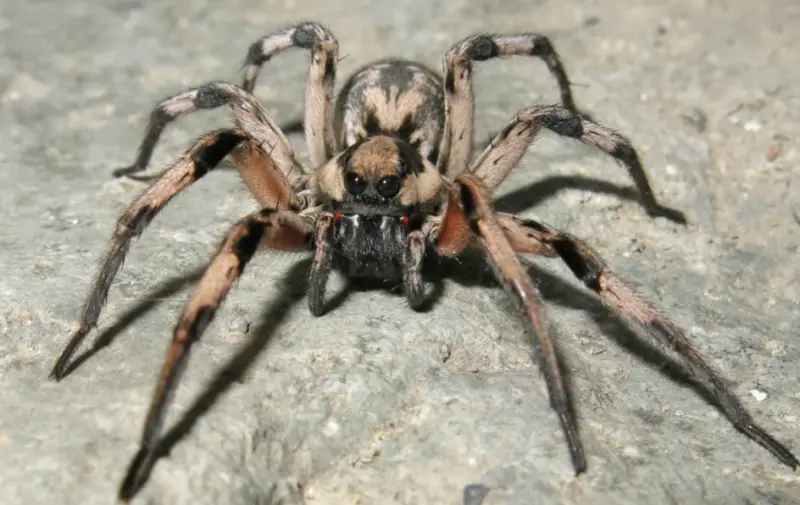
Wolf Spiders (Lycosidae family) are robust, agile spiders with hairy brown, gray, or patterned bodies, ranging from 0.4–1.5 inches (10–38 mm) in length. They have excellent eyesight with eight prominent eyes arranged in three rows. Unlike web-building spiders, they hunt on the ground, actively chasing prey such as insects and smaller arthropods.
In New Mexico, wolf spiders inhabit deserts, grasslands, and rocky areas. They hide under rocks, logs, leaf litter, and in burrows during the day, emerging at night to hunt. They are solitary and do not build webs to capture food.
Wolf spider venom can cause localized pain, redness, and swelling, but it is rarely harmful to humans. Bites are defensive, occurring only when the spider is provoked or accidentally trapped against skin. Severe reactions are extremely uncommon.
Human encounters typically happen when walking barefoot, reaching into debris, or disturbing hiding spots. Bites should be cleaned, and cold packs can reduce discomfort. Wolf spiders are generally non-aggressive and pose minimal risk compared to other New Mexico arachnids.
Treehoppers (Spiny Species)
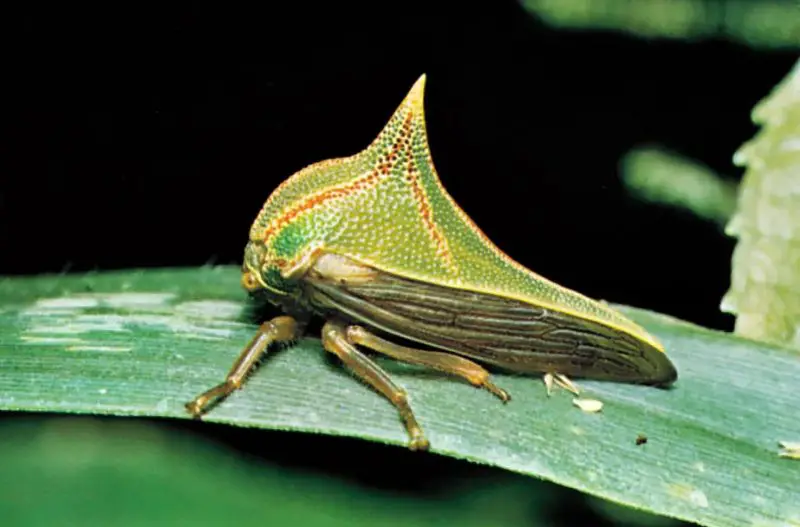
Treehoppers (Membracidae family) are small, sap-sucking insects, usually 0.25–0.5 inches (6–13 mm) long. Some species have prominent spiny or horn-like projections on their thorax, which serve as defense mechanisms. Their coloration ranges from green to brown, helping them blend with plant stems and leaves.
In New Mexico, these insects inhabit trees, shrubs, and garden plants, feeding on plant sap. They are often found on mesquite, oak, or desert shrubs. Treehoppers are relatively sedentary and move slowly unless disturbed.
While they do not inject venom, the spines can cause minor skin irritation, redness, or itching if touched. They are not dangerous to humans, but accidental contact can produce temporary discomfort.
Human encounters are usually accidental, occurring during gardening or plant handling. Avoiding direct contact or using gloves when handling infested plants prevents irritation. Treehoppers are more of a nuisance than a medical threat.
Stinging Beetles (Blister Beetles, e.g., Epicauta species)
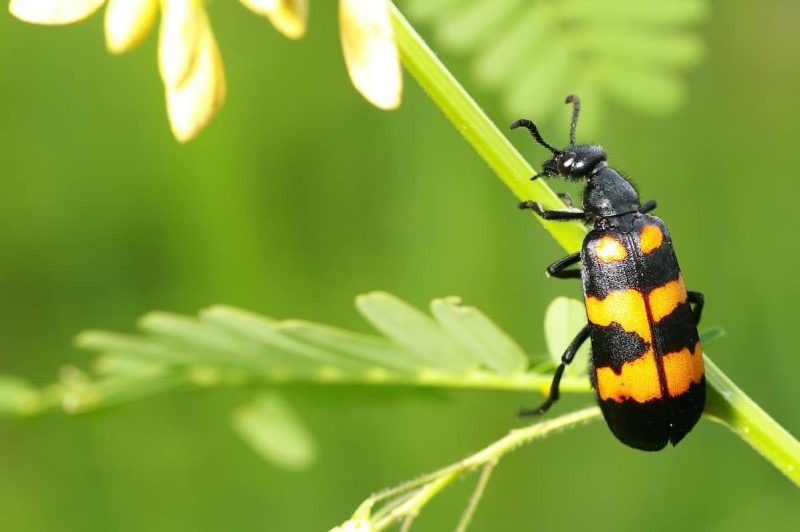
Blister Beetles (Epicauta species) are elongated, soft-bodied insects, typically 0.5–1 inch (12–25 mm) long, with black, brown, or brightly colored patterns. They produce a chemical called cantharidin, which can cause blisters and irritation upon contact with skin.
These beetles are found in gardens, fields, and desert vegetation across New Mexico, feeding on leaves and flowers. They are most active during warm months and often aggregate in groups on host plants. Blister beetles are generally slow-moving and rely on chemical defense rather than speed to deter predators.
Contact with their body can release cantharidin, producing painful blisters, redness, and itching. The chemical is toxic if ingested by humans or pets. While not typically life-threatening, exposure can cause discomfort and requires careful treatment.
Human encounters occur during gardening, handling plants, or accidental contact with beetle aggregations. Gloves, long sleeves, and careful handling of plants reduce risk. Blistering should be treated with gentle washing, topical creams, and avoidance of scratching.
Cicada Killer Wasps
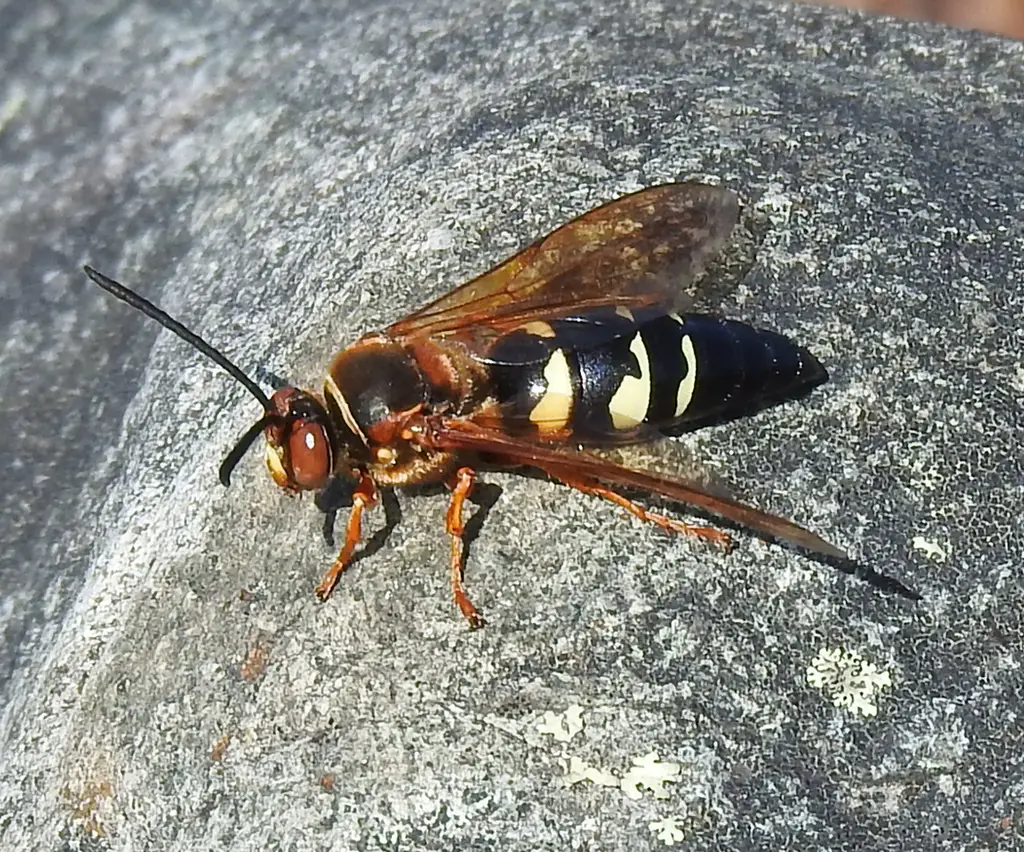
Cicada Killer Wasps (Sphecius speciosus) are large, solitary wasps with black or reddish-brown bodies and yellow markings, measuring 1.5–2 inches (38–50 mm) long. They have strong legs and powerful mandibles used to dig burrows and capture cicadas for their larvae. Despite their intimidating size, they are generally non-aggressive toward humans.
In New Mexico, these wasps dig burrows in sandy or loose soil in desert and suburban areas. Females hunt cicadas, paralyzing them with venom and dragging them into underground nests. Adults feed on nectar and are active during the day, especially in summer.
Their sting is painful but rarely dangerous, used primarily to subdue prey or for defense. Pain, redness, and swelling can occur if stung, but systemic reactions are uncommon. Cicada killers typically do not sting unless handled or provoked.
Human encounters usually happen near burrows or during outdoor activities. Avoiding burrow areas and observing from a safe distance reduces risk. Protective clothing is recommended when working or playing in areas with active nests.
FAQs About Dangerous Bugs in New Mexico
What are the most dangerous scorpions in New Mexico?
The Bark Scorpion (Centruroides sculpturatus) is the most venomous scorpion in New Mexico. Its sting can cause severe pain, numbness, and, in rare cases, life-threatening reactions, especially in children, the elderly, or those with compromised health. Other scorpion species in New Mexico are generally less dangerous but can still deliver painful stings.
Are all spiders in New Mexico venomous?
No, not all spiders are venomous. The most concerning are Black Widow Spiders and Brown Recluse Spiders, whose bites can cause serious medical issues. Most other spiders, like wolf spiders, may bite but are rarely harmful to humans.
Can I get sick from kissing bugs in New Mexico?
Yes, kissing bugs (Triatomine bugs) can carry Trypanosoma cruzi, the parasite that causes Chagas disease. Infection occurs when the bug’s feces enter a bite wound or mucous membranes. However, human cases in New Mexico are extremely rare.
Which caterpillars should I avoid touching?
Avoid Puss Caterpillars (Megalopyge opercularis) and Saddleback Caterpillars (Acharia stimulea). Their spines deliver venom that causes intense pain, burning, swelling, and, in some cases, systemic reactions such as nausea, headaches, or fever.
Are fire ants in New Mexico dangerous?
Yes. Both native and red imported fire ants (Solenopsis invicta) deliver painful stings that can cause itching, swelling, and allergic reactions. Swarm attacks can be especially dangerous for allergic individuals and children.
How can I protect myself from stings and bites?
Wear protective clothing when outdoors, shake out shoes and clothing, avoid dark, damp areas where spiders and scorpions hide, and supervise pets and children. Using insect repellents, sealing cracks, and monitoring for insect activity can further reduce encounters.
What should I do if stung or bitten?
For minor stings or bites, clean the area, apply ice or a cold pack, and monitor for allergic reactions. For severe pain, difficulty breathing, or bites from highly venomous species like the Bark Scorpion, seek immediate medical attention.


